|
 Descomyces albellus Descomyces albellus
SynonymsHymenogaster albellus
Hymenogaster zeylanicus
BiostatusPresent in region - Indigenous. Non endemic
Images (click to enlarge)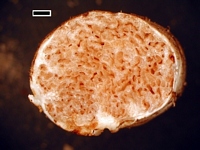
Caption: scale=1mm
Owner: J.A. Cooper | 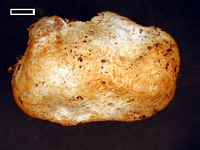
Caption: scale = 2mm
Owner: J.A. Cooper | 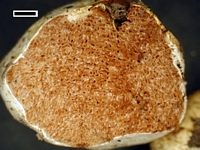
Caption: scale = 2mm
Owner: J.A. Cooper | 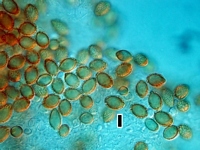
Caption: scale = 10um
Owner: J.A. Cooper | 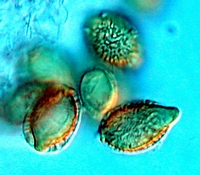
Owner: J.A. Cooper | 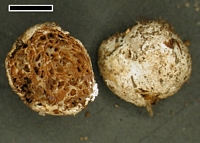
Caption: scale=2mm
Owner: J.A. Cooper | 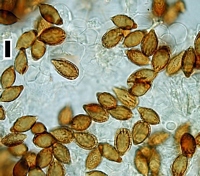
Caption: scale=10um
Owner: J.A. Cooper | 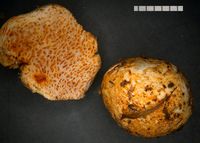
Owner: J.A. Cooper | 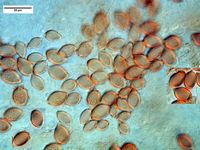
Caption: spores (Melzers)
Owner: J.A. Cooper | 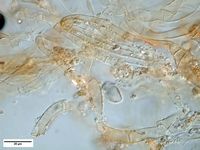
Caption: hyphae on peridium surface
Owner: J.A. Cooper | 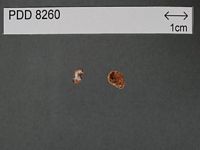
Caption: Dried type specimen
Owner: Herb PDD | 
Caption: Dried type specimen
Owner: Herb PDD | 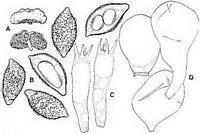
Caption: Hymenogaster zeylanicus: A habit and section (Beaton 54) x I,
B spores x 1750; C basidia x 1000; D epithelial
elements x 1000. |
Article: Beaton, G.W.; Pegler, D.N.; Young, T.W.K. (1985). Gasteroid Basidiomycota of Victoria State, Australia. 3. Cortinariales. Kew Bulletin 40(1): 167–204.
Description: Gasterocarp 1-2 cm diam., subglobose or
depressed, basally attached. Peridium thin, dingy white to yellowish brown,
staining ferruginous on drying, glabrous, dry, smooth to rugose. Gleba cinnamon
brown becoming dark brown, loculate, with small, irregular chambers, 0.5-1.5
mm diam., more elongated towards the peridium. Tramal plates up to 150 µm thick,
white, consisting of a narrow hymenophoral trama and very broad subhymenial
layers; clamp-connexions present on all hyphae. Sterile base absent or very
minute and white. Spores statismosporic and symmetric, 14-20.5 x 6-10(18 ± l
x 8± 0-5) µm (excl. myxosp.), Q = 2.25; ellipso-fusoid with a tapering apex,
golden brown to fuscous brown, with a thickened wall bearing a finely rugulose
exosporial ornamentation and overlaid by a loose, hyaline, membranous myxosporium
which remains closely applied at the apex but becomes detached and torn around
the base. Basidia 28-37 x 7-8.5 µm, elongate clavate, mostly bearing two straight
sterigmata but also one or four sterigmata present; numerous immature ellipsoid
basidia also present. Hymenophoral trama regular, hyaline, of inflated, parallel,
very thin-walled hyphae 3-22 µm diam. Subhymenial layer very well developed,
30-45 µm wide, pseudoparenchymatous. Peridiopellis a stratified, hyaline epithelium
composed of inflated, thin-walled, globose, pyriform or ellipsoid elements,
25-40 x 8-22µm.
Notes: Although described from Sri Lanka, this species
is also known to occur in New Zealand, and was first reported from Victoria
State by Cunningham (1944: 53). It is characterized by the calyptrate appearance
of the spores resulting from the loose myxosporium becoming detached from the
spore-base. The spore-form, together with the epithelial structure of the peridiopellis
is very similar to the structure observed in the agaricoid genus Descolea
and the gasteroid genus Setchelliogaster, and it may become necessary
eventually to recognize at least two taxa within the present concept of Hymenogaster,
namely those species allied to Thaxterogaster and those allied to Setchelliogaster
|